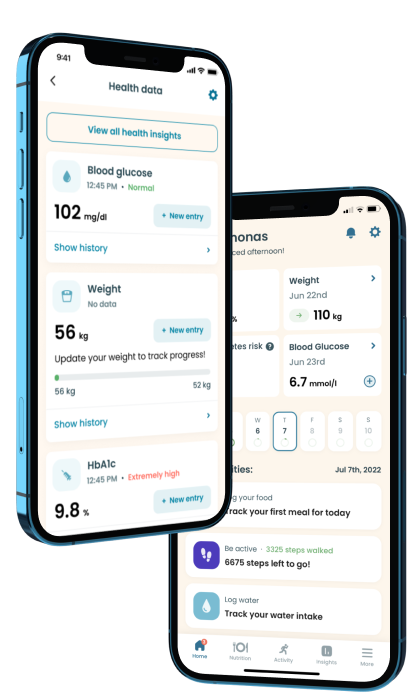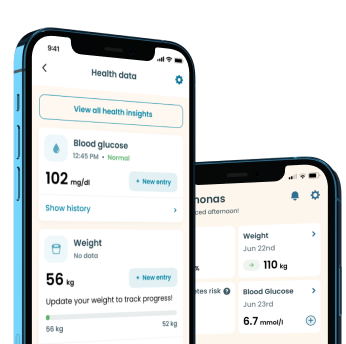Smoking and Diabetes

Smoking has always been known to cause cancer, as well as heart, lung, and other organ disorders. What many don’t know, however, is that smoking increases the risk of diabetes. Notably, one CDC report suggests that smokers have a 30–40% higher chance of developing type 2 diabetes than non-smokers.
However, that’s not all. Read on to discover more on the intricate relationship between smoking and diabetes type 1 and 2.
What Effect Does Smoking Have on Diabetes?
The dangers of smoking to human health have been made known as far back as 1964 by a Surgeon General report. Diabetics are particularly highly susceptible to smoking-induced body cell damage, leading to inflammation and a subsequent reduction in insulin efficacy.
Moreover, when the chemicals in cigarette smoke interact with oxygen in the body, it can cause oxidative stress. These findings are baffling as oxidative stress and inflammation are linked to various diabetic complications and increased diabetes risk.
More worrying is that smoking can make the regulation of insulin levels and overall diabetes management more difficult since excessive nicotine levels can reduce insulin’s effectiveness. In other words, smokers will require more insulin to maintain blood sugar levels.
Below are some of the health risks smoking poses to people with diabetes.
It May Raise Blood Sugar Levels
Diabetics already have enough to worry about when it comes to regulating their blood sugar levels. Engaging in activities like smoking only makes this more challenging to achieve, as highlighted by reports on smoking and blood sugar control. Namely, by increasing your insulin resistance levels, it prompts a marked increase in blood sugar levels.
It Increases Cardiovascular Disorders Risk
Smoking is a known risk factor for heart disease — a common diabetes risk factor and complication. The scenario gets uglier in people with diabetes who smoke since their chances of developing a cardiovascular disorder (e.g., heart attacks or stroke) skyrocket. In most cases, this double-burden can be fatal. Furthermore, smoking raises triglycerides levels — a type of fat found in your bloodstream, which alongside high cholesterol, is linked to a higher cardiovascular risk.
It May Cause Respiratory Problems
A CDC report claims that people with diabetes are three times more likely to die from flu and pneumonia. Similarly, smoking directly affects your lungs, causing emphysema, chronic bronchitis, and other respiratory conditions. Since diabetics have an already compromised immunity, smoking exacerbates the severity of these infections, requiring a lengthier recuperation period.
It May Affect Eye Health
Diabetes increases the risk of cataracts, glaucoma, among other eye problems. Notably, high blood sugar levels can damage retinal blood vessels, leading to a condition known as diabetic retinopathy. Since smoking prompts an increase in blood sugar and blood pressure and an associated decrease in oxygen reaching the eyes, it elevates the risk of developing diabetic retinopathy.
It Poses Risk to the Kidneys
Smoking, on its own, raises your risk of kidney disease, but the condition gets even worse if you have diabetes. Since smoking increases the blood pressure and fat deposits in the arteries, the kidneys suffer from a diminished blood supply.
More importantly, high blood sugar undermines the integrity of the membranes surrounding the kidney’s tiny blood vessels. This results in a subsequent decrease in the kidney’s filtering effectiveness, causing a condition known as diabetic nephropathy.
How to Quit Smoking
The decision to quit smoking is a major step towards better diabetes management. However, it’s not as easy as it sounds. One way to prevent relapse is to gradually reduce the number of cigarettes you smoke daily. Here are other tips to make your sojourn smoother.
- Set a deadline.
- Have a convincing reason.
- Try getting rid of all the cigarettes and lighters around the home, and replace them with healthier alternatives like nicotine patches.
- Try to avoid places like pubs that can prompt a relapse.
- Seek help, professional advice, and support from a local stop smoking service (LSSS) near you.
What About E-Cigarettes?
An electronic cigarette (e-cigarette) is a device that emits nicotine in the vapor form rather than in the smoke form. The good thing about e-cigarettes is that they don’t burn tobacco, meaning you don’t get to inhale damaging substances like carbon monoxide or tar. These features make it a healthier alternative to cigarettes and, more importantly, beneficial for those that want to quit smoking.
Summary
Drawing from the presented findings, it’s safe to say that diabetes and smoking don’t go hand in hand. Diabetes, on its own, is enough of a burden. Pairing it with activities like smoking has dire consequences ranging from an exacerbated risk of cardiovascular disease to a worsened renal function.
Overall, it’s advised you quit smoking if you have diabetes. Nicotine patches and e-cigarettes prove to be much safer alternatives and could help you quit smoking in the long run.

Download Klinio app!
Get more by downloading our free Klinio App. Analyze your health, form new habits and manage your diabetes anytime, anywhere.
OR
SCAN QR CODE



GET THE APP







